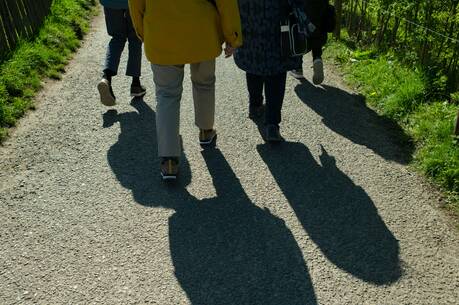All You Can Eat!
This feast combines two previously separate celebrations. Originally, each feast concentrated on one aspect of the awesome mystery of the Eucharist, Christ’s body or his blood. Joined with each other, they bring together the depth and richness of this theology. Looking first at important themes of each individual aspect will help us to appreciate the richness of what is now one feast.
The body. Before we realized that overindulgence in food would produce a national epidemic of obesity, many people flocked to restaraunts that advertised, “All you can eat!” The line between “eat to live” and “live to eat” seems to have become blurred. We are now paying dearly to take off what we have put on.
The feast we celebrate today puts a very different spin on that phrase “All you can eat!” Both Melchizedek himself and the character of his offering prefigure Jesus. In an act of thanksgiving, this mysterious king-priest offered bread and wine, the staples of life. The never-ending supply of bread with which Jesus fed the multitude prefigured his own body, the consecrated bread that sustains us until he comes again. Today Jesus feeds us with bread that is more than mere bread, and in his own prodigality he continues to invite us to eat all that we need to be satisfied.
The blood. It has been two years now since a man entered Conception Abbey, a monastery located in a quiet corner of the Missouri countryside. He shot four monks, killing two of them before he took his own life. No one has yet discovered why he did this. However, true to the paschal mystery to which the monks commit themselves, new life has sprung from this tragically spilled blood.
The ancients believed that life was in the blood. Since all life comes from and remains in the hands of God, lifeblood itself is God’s to give or to take away. The only time one was invited to spill blood was for the offering of a substitutionary sacrifice. The blood of the sacrificed animal became a substitute for human lifeblood, an act that symbolized the offering of the life force within humans. Corresponding to this practice, Jesus offered his own lifeblood as a substitute for the lifeblood of us all. His blood sealed the covenant made between God and humankind (1 Cor 11:25) and brought new life to the world.
On this feast, we celebrate our covenant with God established through the shedding of Jesus’ blood, and through his eagerness to feed us with the only bread that will satisfy our hunger. We renew this covenant by participating in the banquet of his body and blood, a banquet that, through his death, gives us life.
This article also appeared in print, under the headline “All You Can Eat!,” in the June 7, 2004, issue.







